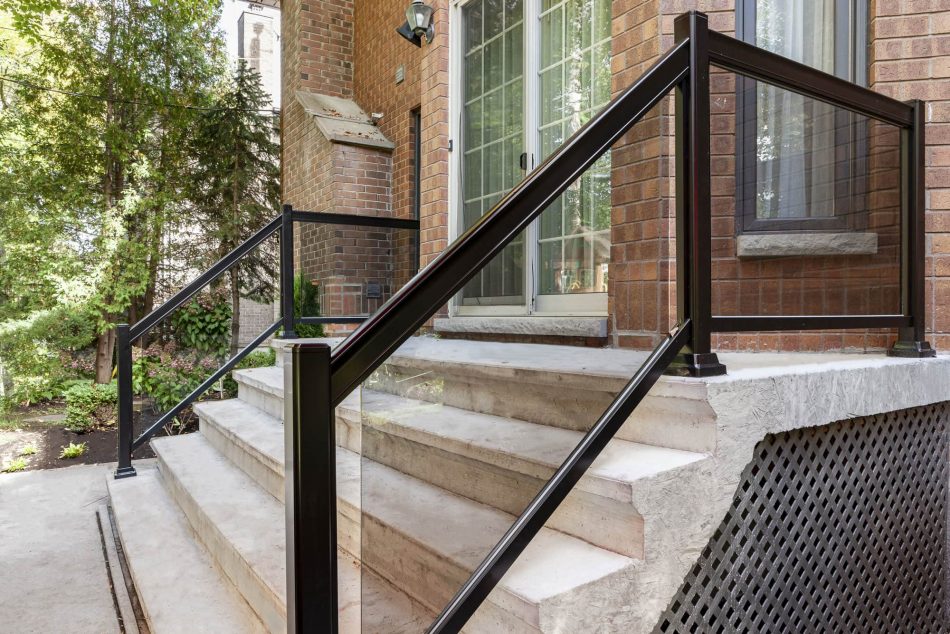Cement Balconies Contractors West Island Montreal
Cement Balconies Contractor west island. Cement balconies, also known as concrete balconies, are common features in many residential and commercial buildings. These balconies are typically constructed using reinforced concrete, which is a mixture of cement, aggregates (such as sand and gravel), water, and sometimes additives or admixtures for enhanced properties.
Key aspects and considerations regarding cement balconies:
- Construction: Cement balconies are usually constructed by pouring concrete into a formwork structure that defines the shape and dimensions of the balcony. Reinforcement bars (rebar) are often added within the concrete to provide strength and stability.
- Durability: Concrete balconies are known for their durability and ability to withstand outdoor elements such as weathering, temperature changes, and moisture. Proper construction and maintenance can contribute to their longevity.
- Design options: Cement balconies offer flexibility in design, allowing for various shapes, sizes, and surface finishes. They can be textured, stamped, or stained to achieve different aesthetic effects.
- Load-bearing capacity: Cement balconies are designed to support the weight of people, furniture, and other objects typically found on a balcony. Engineers calculate the load-bearing capacity based on factors such as balcony dimensions, reinforcement, and intended use.
- Waterproofing: Proper waterproofing is essential for cement balconies to prevent water infiltration and moisture damage. This may involve applying waterproofing membranes, sealants, or coatings to the balcony surface and ensuring proper slope for water drainage.
- Maintenance: Regular maintenance is important to ensure the longevity and safety of cement balconies. This includes inspecting for cracks, corrosion of reinforcement, and addressing any signs of deterioration promptly.
- Safety considerations: Building codes and regulations often dictate safety requirements for balconies, including railing height, spacing, and structural integrity. Proper design and construction are crucial to meet these safety standards.
- Environmental impact: Cement production is associated with carbon emissions, as it involves heating limestone and other materials in kilns. However, efforts are being made to develop more sustainable concrete mixes with lower carbon footprints, such as using alternative cementitious materials or incorporating recycled aggregates.
Cement balconies offer several benefits:
- Durability: Cement balconies are highly durable and can withstand exposure to outdoor elements such as rain, wind, and sunlight. Properly constructed cement balconies can last for decades without significant deterioration.
- Strength: Cement balconies are strong and capable of supporting heavy loads, including furniture, plants, and people. Reinforced concrete construction enhances their structural integrity, making them suitable for various uses.
- Versatility: Cement balconies can be designed in different shapes, sizes, and styles to complement the overall architecture of the building. They offer flexibility in design, allowing customization to meet specific aesthetic preferences and functional requirements.
- Low Maintenance: Compared to other balcony materials, such as wood or metal, cement balconies require minimal maintenance. Routine cleaning and occasional inspection for cracks or damage are typically sufficient to maintain their appearance and structural integrity.
- Fire Resistance: Concrete is inherently fire-resistant, making cement balconies a safer option in the event of a fire. They do not contribute to the spread of flames and can help contain fires within a building.
- Weather Resistance: Cement balconies are resistant to weathering and deterioration caused by moisture, temperature fluctuations, and exposure to UV radiation. Properly sealed and waterproofed balconies can withstand harsh weather conditions without significant damage.
- Aesthetic Appeal: Cement balconies offer a wide range of design possibilities, including various surface finishes, textures, and decorative elements. They can be customized to enhance the visual appeal of a building and create inviting outdoor spaces.
- Long-Term Value: Investing in a cement balcony can add long-term value to a property. Its durability and low maintenance requirements can result in cost savings over time compared to other balcony materials that may require frequent repairs or replacement.
Various designs and styles:
- Cantilevered Balconies: Cantilevered balconies are attached to the building without additional support from columns or posts underneath. They appear to float or protrude from the building’s facade, creating a sleek and modern aesthetic.
- Supported Balconies: Supported balconies are directly supported by columns, beams, or other structural elements. They typically require additional support underneath, either from the building structure or external columns.
- Enclosed Balconies: Enclosed balconies are covered or enclosed with walls or windows to create additional living space or protect against weather elements. They can be fully enclosed with glass or partially enclosed with screens or railings.
- Open Balconies: Open balconies are not enclosed and provide an open-air space for outdoor activities, relaxation, and enjoying views. They are often equipped with railings or parapets for safety.
- Juliet Balconies: Juliet balconies are shallow balconies that do not protrude significantly from the building facade. They are primarily decorative and typically feature a railing or balustrade, providing a French door or window with an outdoor view.
- Wraparound Balconies: Wraparound balconies extend along two or more sides of a building, offering panoramic views and multiple points of access from different rooms or areas within the building.
- Multi-level Balconies: Multi-level balconies consist of multiple tiers or levels, creating a visually interesting outdoor space with varying elevations. They can be interconnected with stairs or ramps to facilitate movement between levels.
- Custom-designed Balconies: Custom-designed balconies are tailored to meet specific architectural, aesthetic, and functional requirements of a building or project. They can incorporate unique features, materials, and design elements to enhance the overall design concept.
These types of cement balconies can vary in size, shape, and complexity, depending on factors such as building design, structural considerations, local building codes, and budget constraints. Each type offers its own set of advantages and considerations, and the choice depends on the preferences and needs of the building occupants and designers.
